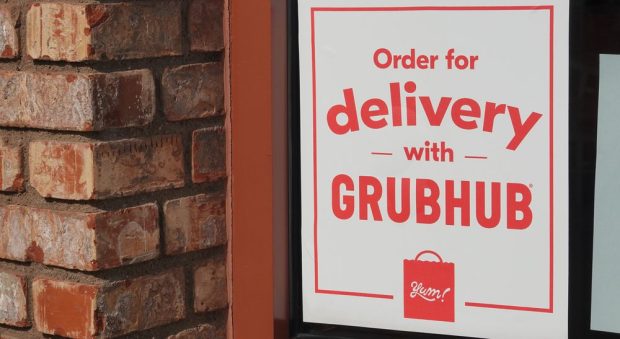Grubhub Adds On-Demand Drivers as Aggregators Vie for Restaurants’ Loyalty

As aggregators compete to woo restaurants, Grubhub is offering more flexible features.
The Chicago-based food delivery platform announced Thursday (Sep. 7) the launch of a new feature for restaurants, dubbed “On-Demand Delivery,” enabling eateries that leverage their own driver networks for deliveries to request additional courier labor from Grubhub as needed.
The company is piloting this feature in a handful of locations, including Los Angeles, Washington D.C., Chicago and others, charging those that take advantage of the option a $5 delivery fee for each order.
“Whether a restaurant could use extra support to keep up with demand during peak hours or cover for a driver who called in sick, we want to give restaurants even more help to run their business and deliver a great experience to customers,” Liz Bosone, Grubhub’s vice president of restaurant success, said in a statement.
“We’ve heard from our restaurant partners that they welcome the convenience of this feature and like having alternate fulfillment options that don’t require hiring additional staff,” Bosone said.
For nearly two years, the aggregator has offered restaurants that use their own driver labor an option to expand their radii with the addition of Grubhub’s drivers, an option called Supplemental Delivery. This new feature adds more granular options, enabling restaurants to utilize Grubhub on an order-by-order basis.
The move comes as aggregators race to provide restaurants with the most comprehensive and flexible options in an effort to insert themselves into more and more parts of the restaurant industry.
From their ordering marketplaces to their driver networks to — at least in DoorDash’s case — the on-premise experience, these companies are looking to control as many parts of the process as possible, driving merchant and consumer loyalty, and encouraging both sides to depend on their offerings.
Consumer demand for delivery may be taking a dip now, as ongoing economic pressures have many restaurant customers shifting to more budget-friendly channels.
However, at other times, restaurants have found that demand for delivery exceeded their capacity. By offering more flexible driver options, aggregators can meet this key need for merchants, while those merchants can continue to retain control of their labor.
When it comes to consumers, Grubhub is falling behind, according to PYMNTS Intelligence from the Connected Dining series, for which we surveyed thousands of consumers about their restaurant ordering habits. In June, 77% of aggregator users reported that they were DoorDash customers, up from 71% at the close of last year. In contrast, 49% of aggregator users reported ordering from Uber Eats in June, down from 54% at the close of last year, and 35% said the same of Grubhub, down from 38%.
Additionally, the Chicago-based aggregator’s parent company, multinational food delivery company Just Eat Takeaway, continues to look for buyers. In its latest earnings report, Just Eat said orders in its North American (which includes Grubhub in the United States and SkipTheDishes in Canada) fell by 15% year over year in the first half of 2023, from 171 million down to 145 million.

